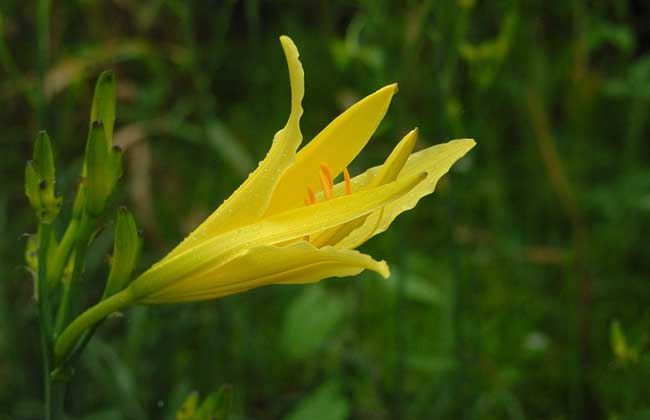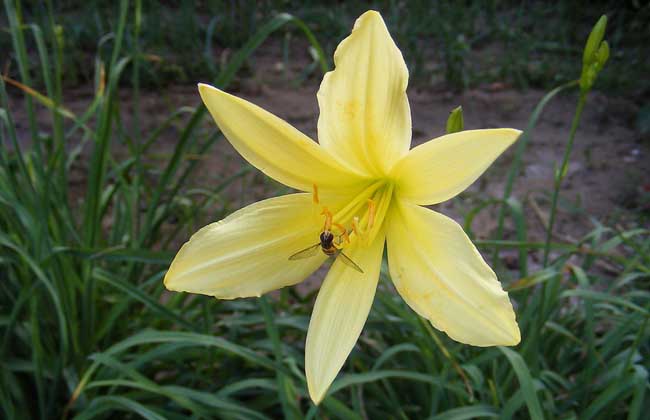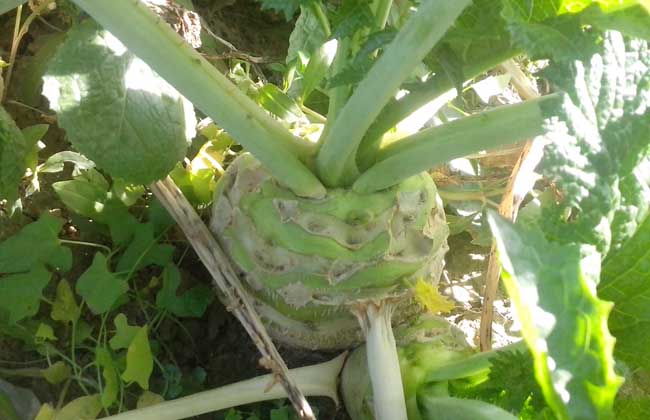How to plant cauliflower seeds?

Cauliflower is barren, drought-tolerant, lax in soil, and can be cultivated in geography or on hillsides. It can adapt to a wide range of light and can be intercropped with taller crops. It is cultivated all over the north and south of our country. Shaodong County and Qidong County are named as the origin of cauliflower. The most commonly used method of reproduction is ramet, but it can also be propagated with seeds. Let's take a look at how to grow cauliflower seeds.
Seed collection of cauliflower
The seeds of cauliflower should choose yellow flowers which are robust, disease-free and planted for 5-8 years. In the early flowering stage, 5-6 sturdy buds are left on each stalk not to be picked, so that they can bear fruit and remain as seeds. The rest of the buds continue to be picked and sold as commodities. The yellow flower used for seed collection was sprayed with 2000 times amino acid solution every 7-10 days and sprayed 2-3 times. When the fruit was ripe and slightly cracked at the top, it was taken off and threshed. The seeds should be kept in a ventilated and dry place.
Seedling raising techniques of cauliflower
Select sites such as sunny beds or greenhouses, use fertile vegetable garden soil as seedbeds, disinfect the soil, and soak the seeds in 25 ℃ warm water for 48 hours. When sowing, 200 kg of rotten and sifted organic fertilizer was applied to each border (1.50-7 m). After the border was leveled, the bottom water was poured. After the water seeped, the furrow spacing was 15 cm and the plant spacing was 3 cm. After sowing, the soil was covered with 2 cm soil. When the seedlings are raised in the sunny border, a small arch stalk cover film can be inserted on it. The temperature in the greenhouse can be maintained at 25 ℃ during the day and no less than 12-15 ℃ at night. The seedlings can emerge in one week. After emergence, the temperature in the greenhouse gradually decreases to adapt to the external climate and prevent the seedlings from overgrowing. In the seedling stage, the field management should be strengthened to keep the soil moist. Pay attention to disease prevention and pest control, more ploughing and spraying some foliar fertilizer to promote the growth and development of seedlings and cultivate large and strong seedlings for transplanting in the coming year.
Cultivation and management of cauliflower
1. Reasonable close planting: close planting of cauliflower can give full play to population advantages, increase the number of tillers, bolting and buds, and achieve the purpose of increasing yield. Generally adopt wide and narrow row cultivation, wide row 60 cm 75 cm, narrow row 30 cm 45 cm, hole distance 9 cm 15 cm, planting 2 plants per hole, planting 45000 ~ 75000 plants per hectare, and the peak yield period reaches 1.5 million ~ 2.25 million plants / ha.
2. Appropriate deep planting: the root group of cauliflower grows from around the shortened stem, with one layer a year, and the root position moves up year by year from bottom to top, so proper deep planting is beneficial to plant survival and prosperity, and the suitable planting depth is 10-15 cm. Root water should be watered after planting, and the soil should always be kept moist before autumn seedlings grow, so as to facilitate the growth of new seedlings.
3. Cultivating soil in middle ploughing: cauliflower is a fleshy root system, which needs fertile and loose soil environmental conditions in order to be beneficial to the growth and development of the root group. During the growth period, intertillage should be carried out for 3 times according to the growth and soil consolidation, and the first time should be carried out when the seedlings are unearthed. The second to fourth times in the bolting stage combined with mid-tillage to cultivate the soil.
4. Fertilization management: cauliflower requires sufficient winter fertilizer (base fertilizer), early seedling fertilizer, heavy bolting fertilizer and bud fertilizer.
① winter fertilizer should stop growing in the upper part of cauliflower field, that is, autumn seedlings withered by frost or when planting, mainly organic fertilizer, high-quality farm manure 30,000kg / ha, calcium superphosphate 750kg / ha.
② seedling fertilizer: seedling fertilizer is mainly used for seedling emergence and long leaves to promote the early growth and rapid development of leaves. Seedling fertilizer should be applied sooner rather than later. It should be topdressing at the beginning of cauliflower sprouting, calcium superphosphate 150kg / ha and potassium sulfate 75kg / ha.
③ bolting fertilizer: cauliflower bolting period is an important period from vegetative growth to reproductive growth, which requires more fertilizer, which should be applied at the beginning of bolting, urea 225kg / ha, calcium superphosphate 150kg / ha, potassium sulfate 75kg / ha.
④ bud fertilizer: Bud fertilizer can prevent cauliflower from getting rid of fertilizer and early senescence, increase bud rate, prolong picking period and increase yield. Urea 75 kg / ha should be applied within 7-10 days after picking. At the same time, 0.2% potassium dihydrogen phosphate was sprayed on the leaves every 7 days or so, 0.4% urea, 1-2% calcium superphosphate aqueous solution, and 15020 mg / kg 920 was sprayed once after 17: 00, which had obvious effect on strengthening buds and preventing bud removal.
Related
- A course of planting techniques and methods on how to grow carrots
- How to plant the latest tulips?
- Is it better to pick tea in the morning or in the afternoon? When is the best time for tea to be picked? what is the third or fifth tea?
- Launch Yuanxiao Happy combination Haocha + Tea Yuan healthy Taste
- Penghu Tourism "Fireworks 20 Parade with You"
- 2022 West Lake Happiness holds "Digital Revitalization Voucher" and draws iphone13 and laptop.
- Banqiao Fuzhou social houses are designed to change start-up combined with police elimination to create a safe and livable environment
- The convenient measure of "mechanical weeding" in Xinbei has been abused and the Agriculture Bureau has imposed heavy penalties on the illegal land consolidation.
- Changgeng University Joins Hands with Four Memory Factories to Rescue Memory Talent Shortage
- The list of Taiwan's top 100 MVP managers is listed by the Director-General of the Farmers' Association of Sanxia District.



